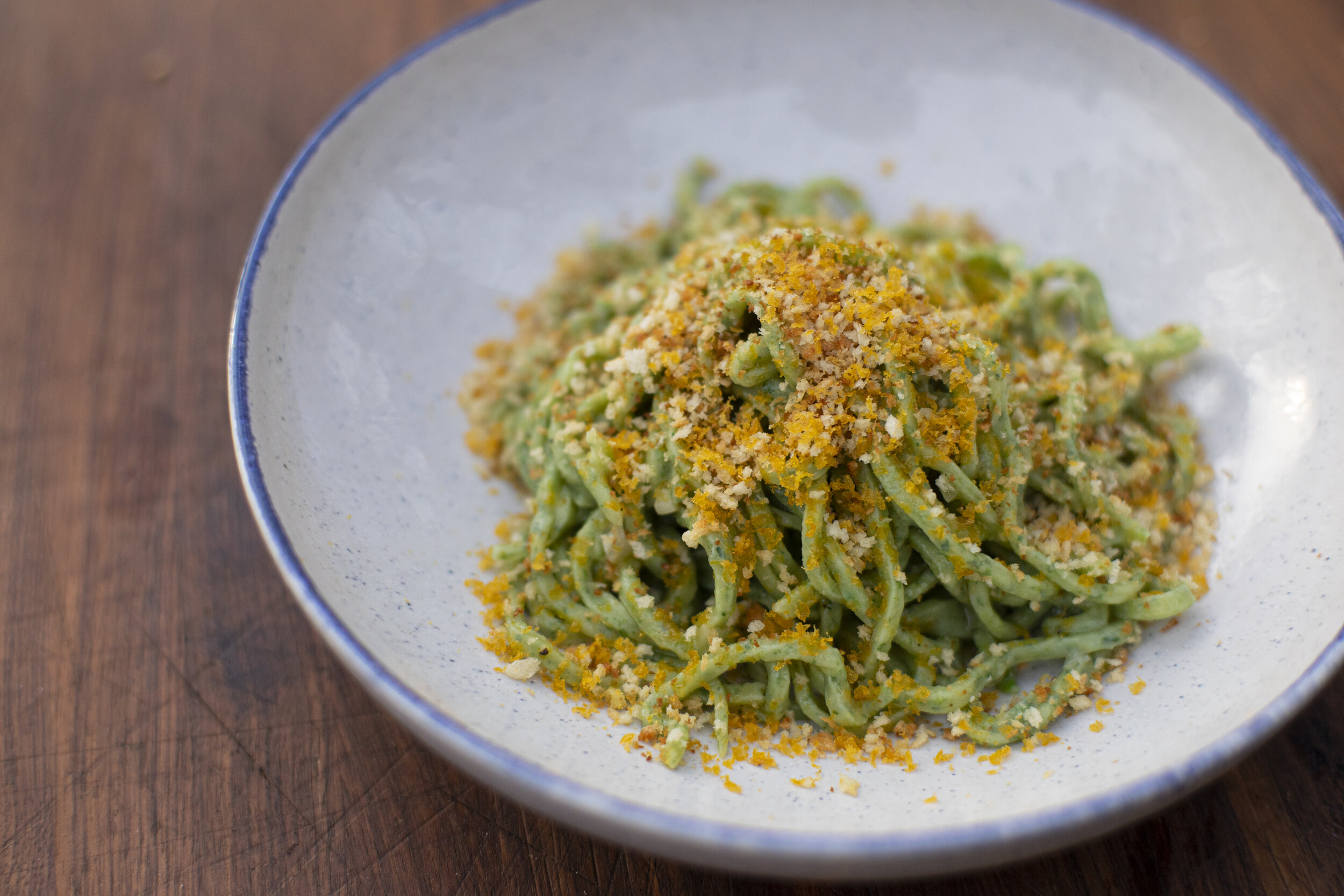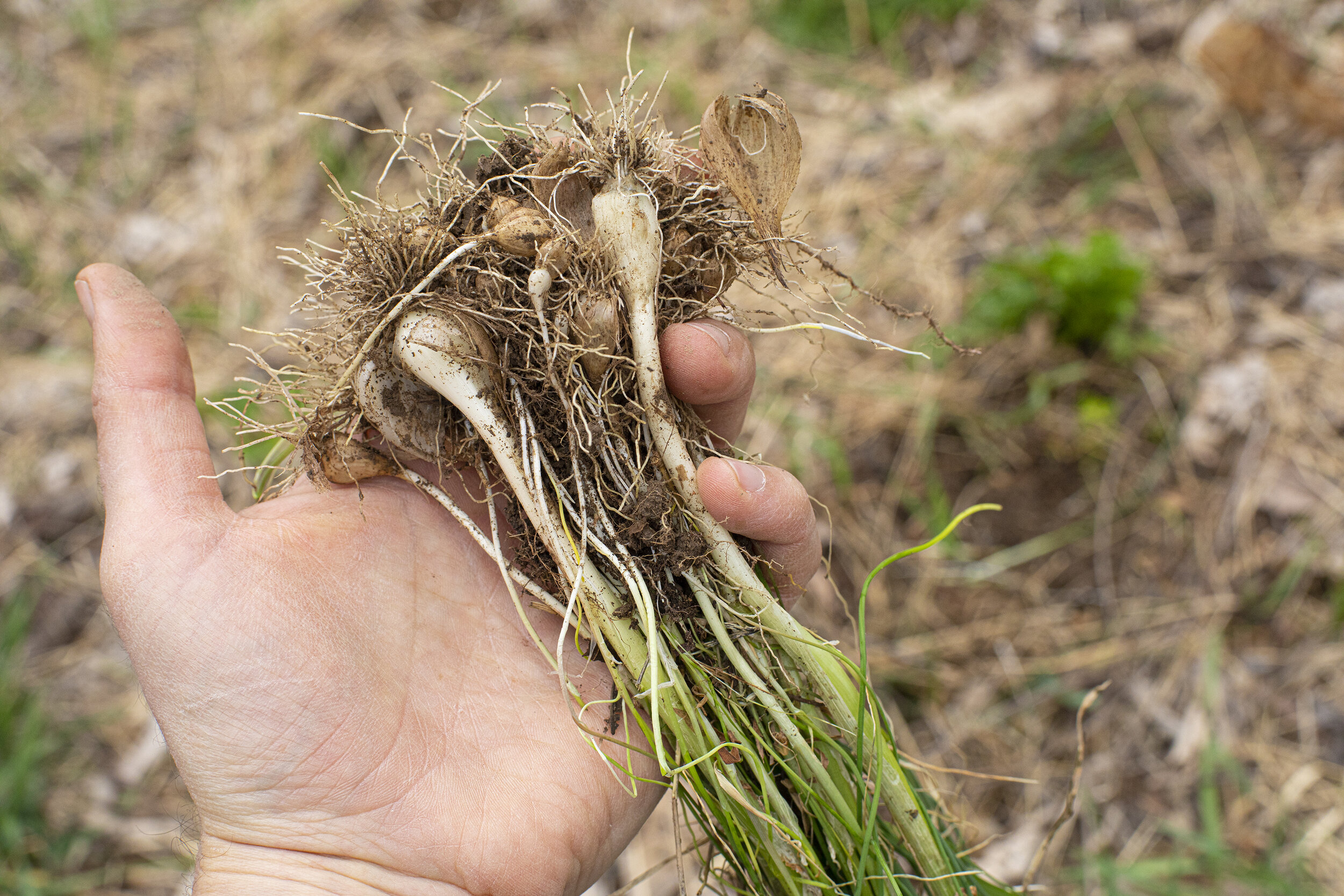Stinging Nettle & Ramp Leaf Oil Pizza
Always a thrill stumbling into new areas- creeks lush with watercress and nettles and unfamiliar hillsides with healthy populations of ramps. It was still a little early for morels but I came home with plenty. We fired up a bunch of pizzas but I was most excited about this nettle, ramp leaf oil, sausage, and lemon zest pie. It was a good day. Video of the process below.
Ingredients:
Fresh stinging nettle tips (handle with care)
Fresh ramps (leaves only) *please leave bulbs in the ground
Shredded mozzarella
Crumbled sausage (sauteed in advance)
Lemon (to zest)
Good olive oil
Pecorino Romano
Pizza dough
The Nettles
Bring a large pot of water to a boil.
Prepare a large ice bath in a bowl.
Using tongs, drop your stinging nettle into a pot of boiling water for 1 minute. Blanching will immediately nullify the stinging power of the nettle and you’ll then be able to handle it without concern.
Transfers the blanched nettle to the ice bath to shock them.
Drain, and squeeze out as much water as you can. Allow to air dry to remove even more water.
Drizzle with olive oil and set aside.
The Ramp Oil
Clean your ramp leaves in a cold bowl of water to remove any bits of dirt.
Trim the stems off completely leaving only the leaves behind.
Lay in the ramp leaves into your food processor (or blender) and add in good quality olive oil. You’ll have to use your best judgement on the amount depending on how many ramps you’re using. The consistency should be thinner than pesto.
Add a little dash of salt, and blitz for about a minute.
Transfer the puree into a fine mesh sieve and use a rubber spatula to press the oil down into a bowl. What’s left behind is a fragrant mash of ramp leaves with some traces of oil. This can be saved / frozen / and incorporated into countless other dishes. For now, you’re focusing on just the extracted oil that comes out of the sieve.
Transfer the oil into a container, ideally a squeeze bottle with cap. It’s ready to go. Store in the refrigerator.
The Dough
For the pizza dough I have been very happy using a Ken Forkish recipe from Flour Water Salt Yeast for an overnight dough (67% hydration) with levain. It’s one of the few recipes that I have decided not to mess with as it always yields great results.
The Assembly & Finishing
Stretch your dough and drizzle first with a little bit of olive oil.
Layer on your shredded mozzarella cheese.
Now evenly distribute the blanched nettles (in olive oil).
Spread out the cooked sausage crumble evenly.
Grate fresh Pecorino Romano over the top of the pie.
Bake your pizza. I use a wood fired Ooni Pro but use whatever works for you.
Drizzle on a generous amount of ramp oil.
Add fresh lemon zest.
Enjoy!














